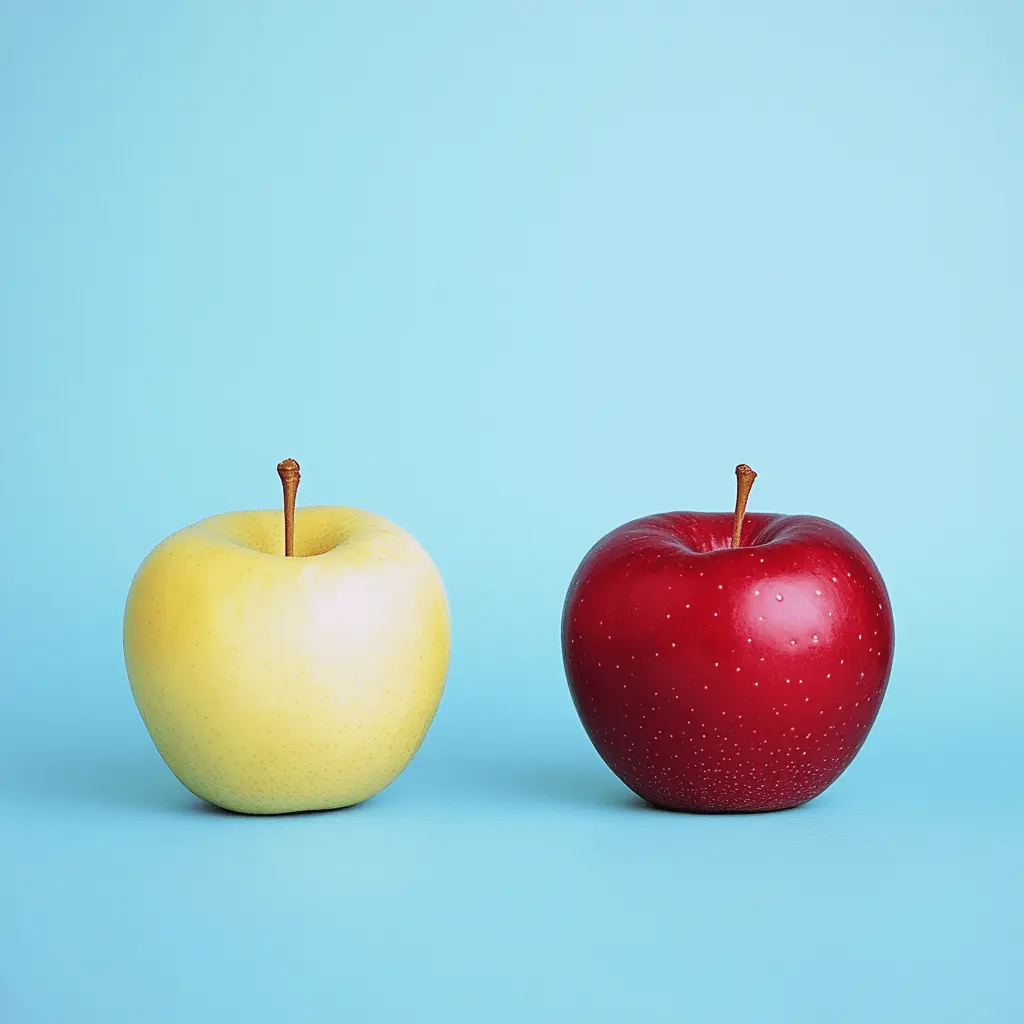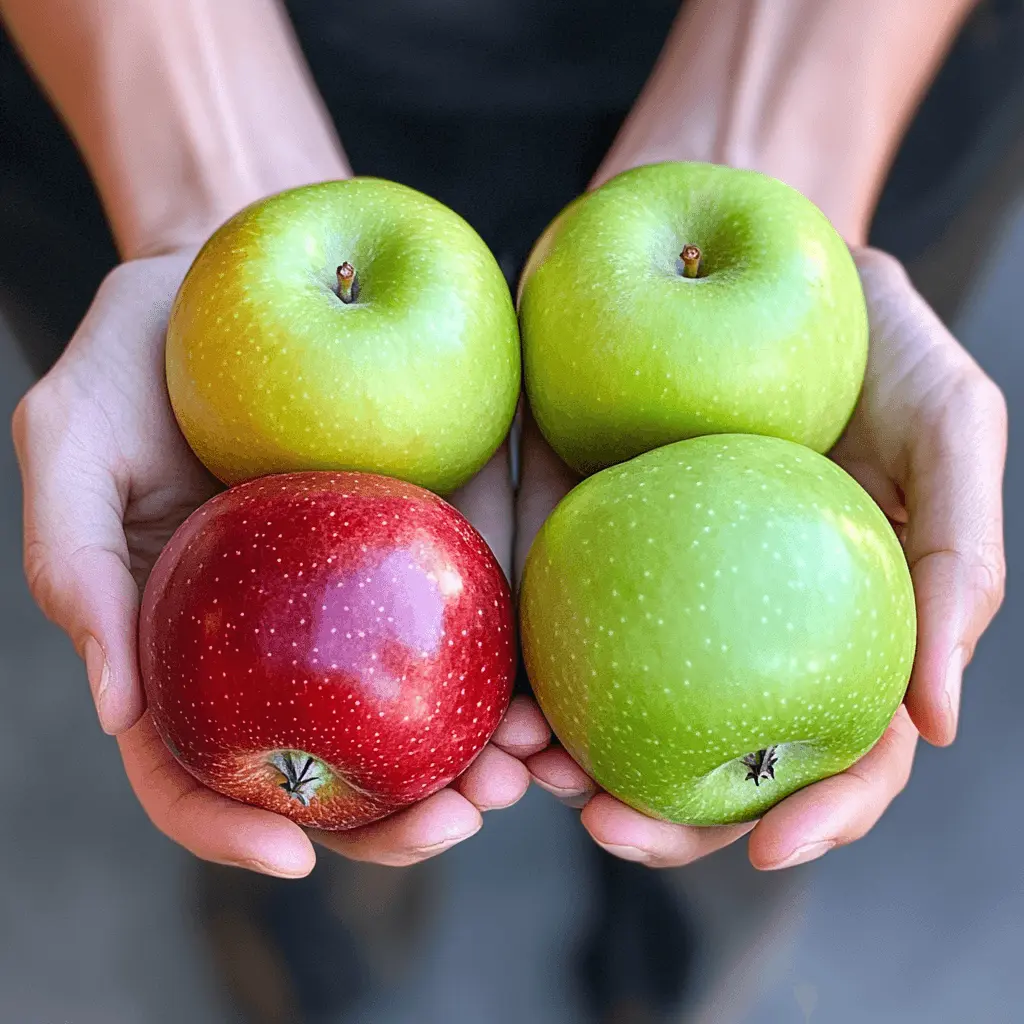Apples have long been hailed as one of the healthiest and most convenient snacks around. With over 7,500 varieties grown worldwide, it’s easy to assume they’re all pretty similar—but not all apples are created equal when it comes to nutrition. Among the many types, the Honeycrisp apple stands out for its unique balance of sweetness, crunch, and nutritional value.
In this post, we’ll dive into the nutrition facts of the Honeycrisp apple, compare it to other popular varieties like Fuji, Gala, and Granny Smith, and explore why it may be the healthiest apple choice for your diet. Whether you’re watching your sugar intake, looking for more fiber, or simply want a satisfying snack, understanding Honeycrisp apple nutrition can help you make smarter choices.

Overview of Apple Nutrition
Apples are not just a sweet, crunchy treat—they’re a nutritional powerhouse packed with essential vitamins, minerals, and antioxidants. Understanding the core nutrients found in apples can help explain why they’re often labeled a superfruit.
What Makes Apples a Healthy Fruit?
Apples are naturally low in calories and high in dietary fiber, making them an ideal snack for weight management and digestive health. Most of the fiber is found in the skin, so eating the apple whole provides the best nutritional benefit. In addition to fiber, apples are:
- Low in fat and sodium, supporting heart health.
- Made up of over 85% water, helping with hydration.
- A source of natural sugars like fructose, which provide quick energy without the crash of processed snacks.
Their nutrient density and low-calorie profile make apples a top choice for healthy eating.
Key Nutrients Found in Apples
The exact nutrition profile varies slightly by apple type, but in general, one medium apple (about 200g) contains:
- Calories: ~95
- Fiber: 3–4 grams
- Vitamin C: 8% of the Daily Value (DV)
- Potassium: ~195 mg
- Carbohydrates: ~25 grams
- Sugars: ~19 grams (natural)
Other important compounds include:
- Polyphenols – powerful antioxidants that support cellular health
- Flavonoids – linked to reduced risk of heart disease and certain cancers
- Quercetin – an anti-inflammatory antioxidant particularly high in apple skins
These nutrients work together to support immunity, reduce inflammation, and promote overall wellness.
How Apple Nutrition Supports Health
Apples contribute to multiple aspects of health thanks to their unique nutritional makeup. Here’s how:
- Heart Health: The fiber and antioxidants in apples help lower LDL (“bad”) cholesterol and improve cardiovascular function.
- Blood Sugar Control: While apples contain natural sugars, their fiber slows digestion and absorption, helping to prevent spikes in blood glucose.
- Gut Health: Soluble fiber in apples acts as a prebiotic, feeding good bacteria in the gut.
- Weight Management: Their high water and fiber content increases feelings of fullness, which can help reduce overall calorie intake.
- Immunity Boost: Apples provide vitamin C and other antioxidants that support immune defenses.
This foundational understanding sets the stage for comparing apple varieties—especially highlighting where Honeycrisp apples stand out nutritionally.

Nutritional Breakdown of Popular Apple Varieties
While all apples offer nutritional benefits, different varieties can vary in their calorie count, sugar content, fiber levels, and even antioxidant concentration. To understand why Honeycrisp apples shine nutritionally, let’s compare them with other popular types: Fuji, Gala, and Granny Smith.
Honeycrisp Apple Nutrition Facts
The Honeycrisp apple is known for its signature sweet-tart flavor and satisfying crunch—but it also packs impressive nutrition. A medium Honeycrisp apple (approx. 200g) provides:
- Calories: 100–110
- Carbohydrates: 28g
- Sugars: 17–19g (natural)
- Fiber: 3–4g
- Vitamin C: ~8% DV
- Potassium: 200mg
Why it stands out: Honeycrisp apples strike a great balance—high in fiber and flavor, without being overwhelmingly sweet like some other varieties. Their fiber helps moderate the impact of their natural sugars on blood sugar levels, making them a smart choice even for those watching their glucose intake.
Granny Smith, Fuji, Gala – How They Compare
Here’s how other common apple varieties measure up nutritionally (values per medium apple, ~200g):
| Apple Type | Calories | Sugar (g) | Fiber (g) | Vitamin C (% DV) |
|---|---|---|---|---|
| Honeycrisp | 100–110 | 17–19 | 3–4 | 8% |
| Fuji | 110–120 | 18–22 | 2.5–3 | 6% |
| Gala | 95–105 | 16–20 | 2.5–3 | 5% |
| Granny Smith | 80–90 | 12–14 | 4 | 8% |
- Fuji Apples are among the sweetest and highest in natural sugar, which can be less ideal for those managing blood sugar.
- Gala Apples are similar but slightly milder and still fairly high in sugar.
- Granny Smith Apples are lower in sugar and calories, with the highest fiber, making them a good option for those needing a more tart and low-glycemic choice.
Which Apple Has the Most Nutritional Value?
If you’re looking for an apple that tastes great and offers strong nutritional benefits, Honeycrisp is a standout:
- It offers more fiber than most sweet apples, which helps regulate digestion and support heart health.
- It contains a moderate sugar content that’s more balanced than Fuji or Gala apples.
- The crisp texture and high water content increase satiety, making it a satisfying, low-calorie snack.
Takeaway: While Granny Smith may win for lowest sugar, Honeycrisp delivers the best balance between flavor, fiber, and nutrients—making it a top choice for most health-conscious eaters.
To learn more about the nutritional profiles of various apple varieties, check out this detailed breakdown from The USDA National Nutrient Database, which provides comprehensive nutrition data for different apple types.
Benefits of Honeycrisp Apples for Health
Beyond their incredible taste and crunch, Honeycrisp apples offer a range of health benefits backed by their nutrient profile. Thanks to a smart balance of fiber, natural sugars, and antioxidants, Honeycrisp apples support several key areas of wellness.
Great for Weight Loss and Snacking
If you’re looking for a satisfying snack that doesn’t derail your health goals, the Honeycrisp apple delivers:
- Low in calories – A medium Honeycrisp has about 100–110 calories, making it easy to fit into a calorie-controlled diet.
- High water content – Over 85% water helps keep you hydrated and feeling full.
- Rich in fiber – 3–4g of dietary fiber helps curb hunger and regulate appetite, promoting a feeling of fullness and reducing the temptation to overeat.
This combination makes Honeycrisp apples an excellent weight-loss-friendly food—especially when eaten with the skin for maximum fiber benefit.
Rich in Antioxidants and Vitamin C
Honeycrisp apples contain several natural antioxidants, including vitamin C, quercetin, and polyphenols, which help protect cells from oxidative damage:
- Vitamin C supports immune health and helps the body absorb iron.
- Polyphenols have been linked to reduced inflammation and lower risk of chronic diseases like cancer and heart disease.
- Quercetin, found in the skin, is known for its anti-inflammatory and anti-allergy effects.
These compounds work together to boost immunity, protect against free radicals, and support long-term health.

Heart and Blood Sugar Friendly
Despite their natural sugar content, Honeycrisp apples can still be part of a heart-healthy and blood sugar-conscious diet:
- Soluble fiber (like pectin) helps lower LDL cholesterol and improve cardiovascular health.
- The fiber content also slows digestion, which reduces blood sugar spikes after eating.
- Their moderate glycemic index (GI) means they’re less likely to cause sharp increases in blood sugar compared to more refined carbs or sugary snacks.
Plus, the potassium in apples supports healthy blood pressure levels, making Honeycrisp apples a great daily choice for maintaining cardiovascular balance.
In summary, Honeycrisp apples offer more than just great taste—they’re a nutrient-dense fruit that supports weight control, heart health, immunity, and blood sugar management. That’s a lot of goodness packed into one delicious, crisp bite.
Honeycrisp vs Other Apples: Sugar and Fiber Comparison
When choosing the best apple for your health, sugar and fiber content are two of the most important nutritional factors. While all apples contain natural sugars, their impact on your body varies depending on how much fiber accompanies them—and that’s where Honeycrisp apples often come out on top.
Natural Sugar Content: Too Much or Just Right?
It’s a common concern: Are Honeycrisp apples too high in sugar? Compared to some other varieties, they do contain more natural sugars—but context matters.
| Apple Type | Sugar (per medium apple) |
|---|---|
| Honeycrisp | 17–19g |
| Fuji | 18–22g |
| Gala | 16–20g |
| Granny Smith | 12–14g |
While Fuji apples tend to be the sweetest, Honeycrisp provides a balanced sweetness—not overly sugary but more flavorful than tart varieties like Granny Smith. Most of this sugar is fructose, a naturally occurring sugar that’s less impactful on blood sugar when consumed with fiber.
Dietary Fiber: A Key Difference Maker
Fiber is crucial when evaluating the healthiness of fruit—especially one with sugar. It slows digestion, stabilizes blood glucose, and promotes digestive health. Here’s how common apples compare:
| Apple Type | Fiber (per medium apple) |
|---|---|
| Honeycrisp | 3–4g |
| Fuji | 2.5–3g |
| Gala | 2.5–3g |
| Granny Smith | 4g |
Honeycrisp apples contain more fiber than most sweet apples, making them a smart middle-ground choice: they’re sweet and satisfying, but with enough fiber to keep blood sugar in check.
How This Affects Blood Sugar and Fullness
The glycemic impact of an apple depends on both its sugar and fiber content. Foods high in sugar and low in fiber can lead to blood sugar spikes, but Honeycrisp apples offer a moderate glycemic index (estimated between 35–40), meaning:
- Blood sugar rises more slowly, helping avoid energy crashes.
- Insulin response is more controlled, which is ideal for people managing diabetes or insulin resistance.
- The fiber also increases satiety, making Honeycrisp apples more filling than many processed snacks or lower-fiber fruits.
While they’re not the lowest in sugar, Honeycrisp apples strike an ideal balance between sweetness and fiber, making them a healthy, satisfying option for daily snacking.

How to Add Honeycrisp Apples to Your Diet
Now that we’ve explored the nutrition and health benefits of Honeycrisp apples, the next step is making them a regular part of your lifestyle. The good news? They’re incredibly versatile—whether eaten raw or incorporated into meals.
Best Times to Eat Honeycrisp Apples
Thanks to their fiber and natural sugar balance, Honeycrisp apples can be enjoyed at various points throughout the day:
- Morning snack: A quick way to boost energy without reaching for sugary cereal bars.
- Pre-workout fuel: The carbs and water content give you a light energy boost without weighing you down.
- Mid-afternoon pick-me-up: Ideal for curbing cravings and stabilizing blood sugar levels during energy dips.
- After dinner: Naturally sweet and satisfying, a sliced Honeycrisp can replace processed desserts.
Healthy Pairings and Recipes
To enhance their nutrition and create balanced snacks, pair Honeycrisp apples with protein and healthy fats:
- With nut butter: Almond or peanut butter adds protein and healthy fats—great for sustained energy.
- With cheese: A few slices of sharp cheddar or goat cheese complement the apple’s sweetness.
- In salads: Combine chopped Honeycrisp with spinach, walnuts, cranberries, and feta for a heart-healthy meal.
- Baked or roasted: Honeycrisp holds up well to heat—try baking with cinnamon for a naturally sweet dessert.
- Smoothies: Add frozen Honeycrisp chunks to a smoothie with Greek yogurt, oats, and cinnamon.
These combinations increase satiety and improve blood sugar stability by balancing macronutrients.
Tips for Buying and Storing Honeycrisp Apples
Because Honeycrisp apples are slightly more expensive and delicate than some other types, smart storage helps maximize freshness and value:
- Choose apples with firm skin and no bruises or soft spots.
- Store in the fridge—they stay crisp for up to 2–3 weeks in the crisper drawer.
- Keep separate from bananas and other ethylene-producing fruits to avoid premature ripening.
- Wash only before eating, not before storing, to avoid moisture buildup and spoilage.
Their long shelf life and portability make them perfect for keeping on hand as a quick, nutritious snack.
When it comes to choosing the best apple for both taste and nutrition, Honeycrisp apples rise to the top. They strike an ideal balance between natural sweetness, satisfying crunch, and essential nutrients like fiber, vitamin C, and antioxidants. Compared to other popular varieties like Fuji, Gala, and Granny Smith, Honeycrisp apples consistently offer a healthier mix of fiber and sugar, making them a smart choice for anyone looking to support heart health, manage blood sugar, or simply enjoy a more filling snack.
Whether you’re eating them fresh, pairing them with protein-rich sides, or using them in recipes, Honeycrisp apples are an easy and delicious way to improve your diet. So next time you’re at the grocery store or farmers’ market, reach for a Honeycrisp—your body (and your taste buds) will thank you.


